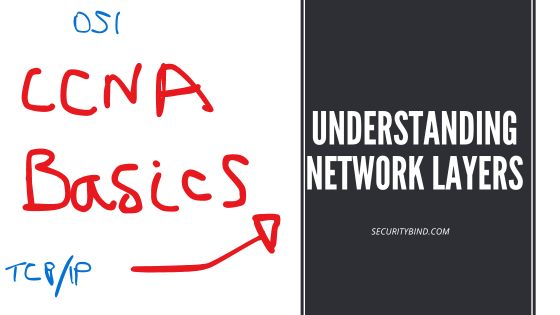Both TCP and UDP operate at the transport layer of the TCP/IP model, similar to how different professionals like electricians and plumbers work on their specific systems within the structure of a house, as we discussed earlier.
TCP vs. UDP: Understanding the Transport Layer Heroes
Let’s break down TCP and UDP like two specialized workers on a job site—each with a different role but both crucial in making things run smoothly.
Just like how a house needs electricians and plumbers to manage different parts of the building process, TCP and UDP manage different aspects of data transport on a network. They operate on the Transport Layer of the TCP/IP model, which ensures data gets from one device to another. But while they both handle communication between devices, they do it in very different ways.
TCP: The Reliable, Detail-Oriented Worker
Imagine you’re sending a fragile package and you need every single part to arrive perfectly and in the right order. That’s where TCP (Transmission Control Protocol) comes in, working like a precise worker who makes sure everything is 100% in order, nothing is missing, and nothing breaks. Here’s how TCP works its magic:
- Connection-Oriented: TCP starts by making a connection, much like making a phone call—you don’t just start talking, you dial and wait for the other person to pick up. Once the connection is set up, data transfer can begin.
- Reliable and Sequenced Delivery: TCP ensures your data is delivered in the exact order it was sent and without errors. If something goes missing or gets scrambled, TCP retransmits the missing data and makes sure everything gets where it needs to be.
- Flow Control: TCP is polite—it checks if the receiving device can handle the data before sending it all at once, like making sure you don’t dump a whole pitcher of water into a small glass.
- Higher Overhead: All these extra steps (connections, flow control, error-checking) come with some cost—TCP uses more resources like memory and bandwidth.
- Best Use Cases: TCP is great for things that must be correct, like web browsing, downloading files, or sending emails. If you’re filling out a form online or sending a report, you don’t want pieces of it missing.
UDP: The Fast and Loose Option
Now let’s meet UDP (User Datagram Protocol)—the faster, simpler worker who doesn’t care as much about all the details. Sometimes, you just need speed, and that’s where UDP shines.
- Connectionless: Unlike TCP, UDP doesn’t establish a connection. It just starts sending data right away, like firing off a text message without waiting for a reply.
- Unreliable, No Sequencing: UDP doesn’t guarantee delivery or order. If some data gets lost along the way, too bad—UDP won’t slow down to check if everything arrived. It’s all about speed and efficiency, not reliability.
- No Flow Control: UDP doesn’t manage how fast data is sent. It blasts data out as quickly as possible and leaves it up to the application to handle any missed packets.
- Lower Overhead: Since UDP skips a lot of the fancy steps TCP takes, it uses less bandwidth and processing power. It’s lean and fast.
- Best Use Cases: UDP is perfect for activities where speed matters more than perfection. Think live video streaming, online gaming, or Voice over IP (VoIP)—in these cases, you can afford to lose a little data without ruining the experience. A tiny bit of lag in a video game is better than stopping the entire game to fix a dropped packet.
TCP vs. UDP: Quick Comparison Table
| Feature | TCP | UDP |
|---|---|---|
| Connection | Connection-oriented | Connectionless |
| Reliability | Reliable, error-checking | Unreliable, no error checking |
| Sequencing | Data arrives in order | No sequencing |
| Flow Control | Controls data flow | No flow control |
| Overhead | Higher (slower, more resources) | Lower (faster, fewer resources) |
| Use Cases | Web browsing, file transfer, email | Streaming, gaming, VoIP, DNS |
When to Use TCP vs. UDP
The choice between TCP and UDP depends on what you’re doing:
- Choose TCP if you need reliable data delivery, such as when sending important files, browsing the web, or emailing.
- Choose UDP if speed is the priority, and losing a little data won’t ruin the experience, like in online gaming or live video streams.
TCP and UDP in Everyday Life
Here’s a simple analogy to help you remember:
- TCP is like sending a letter via registered mail—every step is tracked, and if something gets lost, it will be fixed.
- UDP is like sending a postcard—quick, no tracking, and if it gets lost in the mail, you just move on.
By understanding how these protocols work, you’ll not only be better prepared for the CCNA exam, but you’ll also have a deeper understanding of how the internet functions, from loading websites to streaming movies.
What are the key characteristics that differentiate TCP and UDP, and what applications are best suited for each protocol?
TCP vs. UDP: Key Characteristics and Real-World Uses
When it comes to networking, TCP and UDP are the go-to protocols for managing how data is sent and received over the internet. Both have distinct features that make them better suited for different types of applications. Let’s break down the key characteristics of each, and figure out when to use them.
TCP: The Connection-Oriented Reliability Champion
TCP is like the careful, detailed worker who doesn’t miss a beat. It’s all about making sure that everything arrives exactly how it’s supposed to, no matter how long it takes.
- Connection-Oriented Communication: TCP always starts with a handshake. Think of it like making a phone call—you have to connect with the other person before you can talk. This ensures both parties are ready to communicate, so there’s less chance of data getting lost.
- Data Sequencing: With TCP, data always arrives in the correct order. This is crucial for activities like downloading files or loading a web page, where scrambled data would make the whole thing fall apart.
- Reliable Communication: TCP doesn’t just send data and forget about it. It double-checks that each piece of data (called a segment) was received. If anything is missing, TCP sends it again. That’s why it’s used for things like online banking or system updates, where missing or incorrect information is a big deal.
- Flow Control: TCP is smart about not overwhelming the receiver. It uses something called a sliding window to control how much data it sends at once, making sure the receiver can handle everything without getting flooded. This keeps the network running smoothly.
- Higher Overhead: Because TCP does so much—establishing connections, checking data, controlling the flow—it uses more bandwidth and processing power than UDP. This results in higher overhead, meaning it’s slower and more resource-heavy.
Applications Best Suited for TCP:
- Web Browsing (HTTP/HTTPS): You want every image, script, and text file to load perfectly, and TCP makes sure that happens.
- File Transfers (FTP, SFTP): When you’re downloading a file, missing even a small part can make it unusable. TCP guarantees the whole thing gets there intact.
- Email (SMTP, POP3, IMAP): TCP ensures that all parts of an email—including attachments—arrive in one piece.
- Secure Shell (SSH): For secure remote access to another computer, TCP ensures the connection is stable and reliable.
UDP: The Lightweight, Fast-Paced Protocol
UDP is like the worker who focuses on getting things done quickly, even if it means sacrificing a little accuracy. It’s ideal when speed matters more than perfect reliability.
- Connectionless Communication: Unlike TCP, UDP doesn’t need to “introduce itself” before sending data. It just fires off information without worrying about making a connection first. This makes it super fast but less reliable, kind of like shooting off a text message without confirming that the person received it.
- Unreliable Delivery: With UDP, some data might get lost along the way, and there’s no way to know for sure. If something goes missing, UDP won’t try to resend it. This might sound risky, but for some applications, speed is more important than ensuring every single packet arrives.
- No Sequencing: UDP doesn’t care if data arrives in order. This means the application receiving the data has to figure out the right sequence or just deal with the occasional mix-up.
- No Flow Control: UDP sends data as fast as possible without checking if the receiver can keep up. If the receiving device or network is too slow, some data might be lost.
- Lower Overhead: The beauty of UDP is its simplicity—it doesn’t waste time establishing connections or ensuring everything arrives in order. This results in lower overhead and much faster transmission speeds.
Applications Best Suited for UDP:
- Video Streaming: When streaming a video, a little lost data might cause a small glitch, but the show will go on. The speed and efficiency of UDP make it perfect for this.
- Online Gaming: In gaming, low latency is crucial. You’d rather have a little lag or loss than the game freezing every time something goes wrong. UDP’s speed helps keep games running smoothly.
- Voice over IP (VoIP): For real-time voice communication, slight data loss is usually okay. The priority is keeping the conversation flowing with minimal delay.
- Domain Name System (DNS): DNS requests are small and don’t need error-checking. UDP quickly resolves domain names to IP addresses, speeding up internet browsing.
TCP vs. UDP: Revisiting the Quick Comparison Table
| Feature | TCP | UDP |
|---|---|---|
| Connection | Connection-oriented (handshake first) | Connectionless (send immediately) |
| Data Delivery | Reliable, checks for missing segments | Unreliable, no retransmission |
| Data Sequencing | Data arrives in order | No guarantee of order |
| Flow Control | Yes, prevents data overload | No flow control, sends as fast as possible |
| Overhead | Higher (more resource usage) | Lower (faster, simpler) |
| Use Cases | Web browsing, file transfer, email | Streaming, gaming, DNS, VoIP |
How to Choose Between TCP and UDP
When to Use TCP: Choose TCP when you need to ensure reliability and accuracy—like when sending emails, transferring files, or browsing the web. In these cases, missing or corrupt data would cause major problems, so TCP’s error-checking and data sequencing are essential.
When to Use UDP: Choose UDP when speed is your top priority and occasional data loss is acceptable. Streaming, gaming, and real-time voice or video chats need minimal delay, and UDP delivers that by skipping the extras that slow TCP down.
Understanding when to use TCP vs. UDP can make all the difference in building an efficient network or troubleshooting one. By knowing the strengths and limitations of each protocol, you can choose the right one to fit your application’s needs!


